
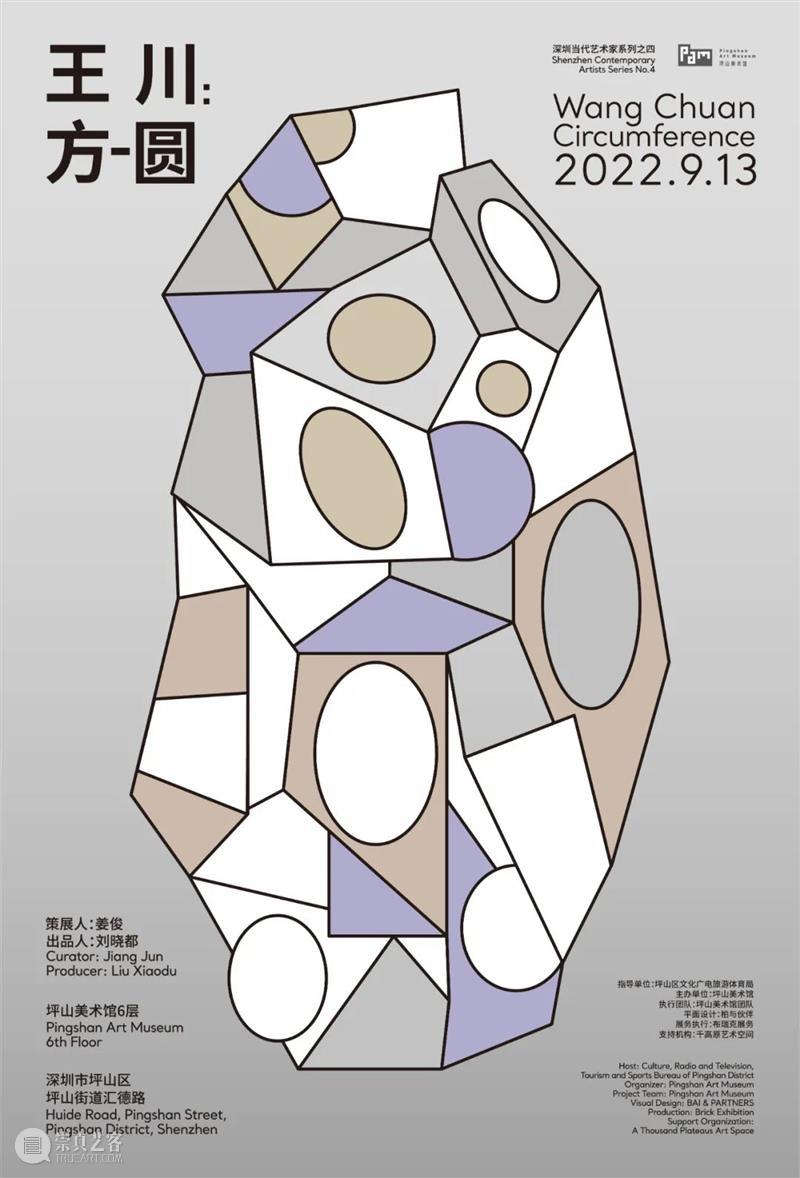
策展人:姜俊
出品人:刘晓都
公众开放时间:2022.9.13起
开幕活动时间:另行通知
地点:坪山美术馆6层
地址:深圳市坪山区坪山街道汇德路
指导单位:坪山区文化广电旅游体育局
主办单位:坪山美术馆
执行团队:坪山美术馆团队
平面设计:柏与伙伴
展务执行:布瑞克展务
支持机构:千高原艺术空间
方-圆
“离娄之明,公输子之巧,不以规矩,不能成方圆”出自《孟子·离娄章句上》,它的意思是“即使有离娄的视力,公输般的手艺,如果不用圆规和曲尺,也不能画好方和圆”。
1978年以来中国艺术打破了社会主义现实主义的单向度,进入了百花齐放的多元创作,艺术家王川便是其少数破局者中的一位。和二战后西方艺术中“第二波国际现代主义浪潮”相似,1978年以后的中国抽象艺术也可以被理解为这一浪潮的全球化传播,而在绘画抽象性上的探索使王川无可争议地成为“85”中国艺术变革的先行者。
但和西方艺术发展的区别在于,中国抽象艺术虽然在创作层面上极具开拓性,为中国单一的艺术创作引入了“国际现代主义”,并打开了此后的多元主义艺术实践,但在接受层面上却始终处于暗流。自20世纪90年代以来,波普对于中国当代艺术发展的影响更为广泛和主流,直到21世纪的第二个十年,抽象艺术才真正开始被中国公众理解和接受。与此同时,王川在抽象绘画上的探索却几十年如一日地持续至今,从未偏离,因此值得我们今天重新审视。
和西方世界观“此岸”和“彼岸”、“精神”和“物质”的二元对立不同,中国的世界观呈现为二元互补,“三生万物,负阴而抱阳”。中国艺术的抽象性也并非如西方艺术那样是对彼岸精神性的追求和超越,所以它并未达到弃绝具象的“纯粹”抽象,而相反是源自于活生生的日常生活、化形于自然世界。中国艺术欣赏“似是而非”的中间状态,在泼墨和草书之中,在园林的假山环绕之下,一切都介于可辨识和不可辨识之间,耐人寻味。
在对西方“国际现代主义”的吸收之外,王川的抽象实践无疑继承,并发展了中国的美学传统。他从水墨和书法中来,跨入油画,长期形成双线创作。他的抽象既不追求至上的几何,也不陷入无尽的“潜意识”深渊,而是居于中。他在意念和日常现实之间游走,在抽象中蕴含着多重意向,不置可否、似是而非……
“方-圆”作为本次深圳坪山美术馆的王川个展的标题,一方面取自于他创作中的两个核心元素“方”和“圆”,另一方面正是希望勾勒出他艺术创作的本质,即“居于中”的状态。“方-圆”同时还有规矩和法度之意,作为中国当代艺术的先行者之一,我们也希望在此重新梳理王川的艺术贡献和成就。
姜俊
2022年8月15日

关于艺术家
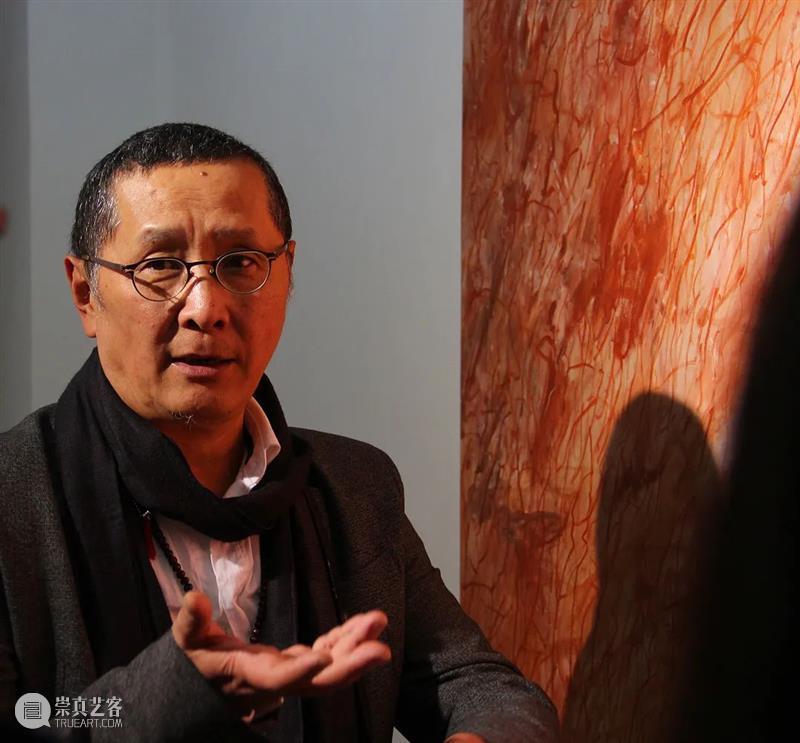
王 川
1953年生于四川成都,1982年毕业于四川美术学院中国画系。现工作生活于深圳、纽约。
王川是“伤痕美术”的代表人物。他早年猎足写实绘画,并斩获颇丰,在1985年新浪潮时期转向抽象艺术的创作。90年代末,王川身患恶疾却实现了顿悟式的转折,将创作带到了另一高度。这也让他的绘画变成个人心灵的修行。他近年的作品潜藏着能量底蕴,通过大小、虚实、粗细、点线面的对比及形态的呈现,往往给人们接近于精神体验般的感受。这种自省和治疗式的创作因艺术家的个人遭遇而起,却意外地让艺术家更为本能地接近深层文化的交流,尤其是对于东方哲学的体验。这种经验是我们仅在艺术史或者其他任何艺术动机状态下无法获得的。王川作品的创作灵感丰富而复杂。有些源自国画里的线条转化在布面油画上,也有涂画,有些既有抽象又有具象元素。如同王川怀疑抽象的纯洁性一样,他也怀疑写实的力量。
王川曾在中国、美国、德国以及中国台湾多次举办个展。他的艺术创作被收录于中国众多知名艺术评论家如高名潞、栗宪庭、巫鸿、吕澎、潘公凯以及西方评论家Robert Morgan的著作中。他的作品被众多机构收藏,包括大英博物馆、旧金山亚洲艺术博物馆、洛杉矶郡立美术馆、美国赫夫纳美术馆、芬兰赫尔辛基国家美术馆、法拉利现代美术馆、尤伦斯当代艺术中心、民生现代美术馆、 香港艺术馆、亚洲艺术文献库、香港M+博物馆、刘海粟美术馆、上海龙美术馆、多伦现代美术馆、广东美术馆、何香凝美术馆、OCT当代艺术中心、深圳美术馆、关山月美术馆、湖北美术馆等。

关于策展人
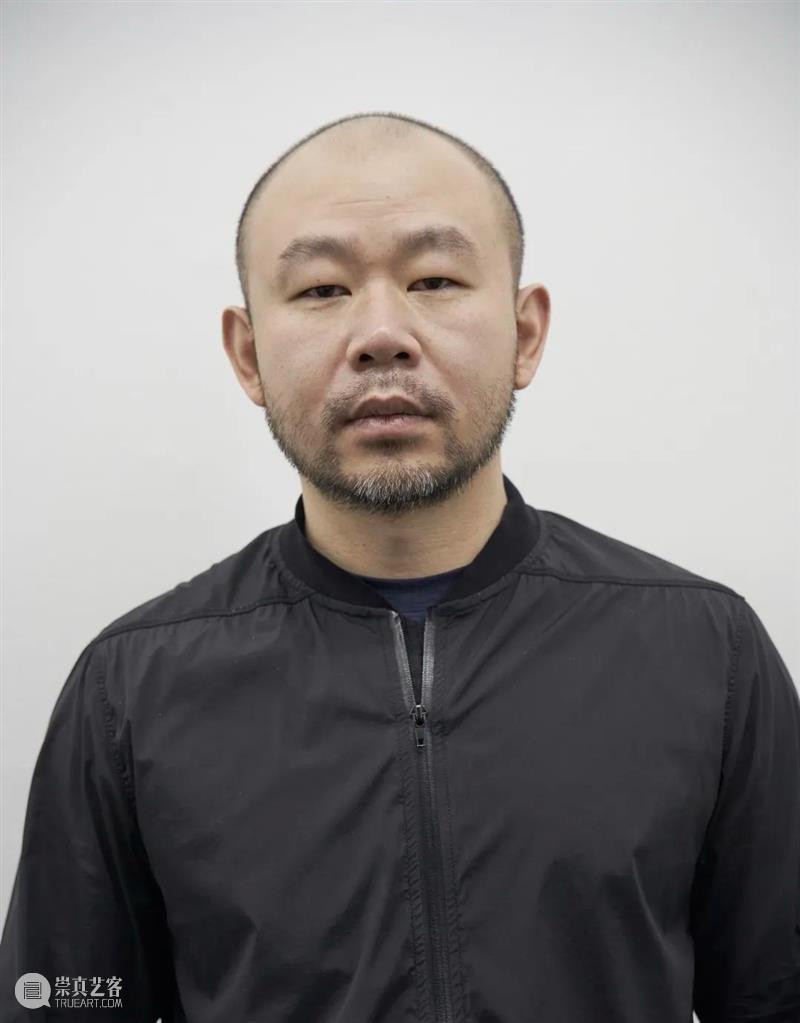
姜 俊
姜俊博士是艺术史家、策展人、艺术评论家,同济大学建筑学博士后,凤凰艺术专栏作家生活和工作于上海和杭州。自从2015年开始在中国美术学院,以及其他美术学院,如上海美术学院、明斯特艺术学院教授艺术史和艺术理论。他是国际公共艺术协会(IPA)研究员、中国工业设计协会信息与交互设计专业委员会(IIDC)会员。2022他应邀担任第七届广州艺术三年展策展人。

坪山美术馆|深圳当代艺术家系列总序
历史的进入与深耕
深圳当代艺术的发展最早可以溯源至85新潮时期,当时深圳作为一个新兴的、充满想象张力的城市,催生和兴起了一些零星的艺术行动和个体实践,但其时,深圳的使命还是在于经济和政治领域的试验与奇迹创造,文化艺术的发展处于“萌而未发”的状态。
直至1997年,深圳同一年建设和开放了何香凝美术馆和关山月美术馆,深圳的当代艺术由此呈现出了日渐明朗的学术定位和版块性的崛起和活力。而2005年,由黄专先生参与发起的OCAT在深圳正式成立,标志着深圳当代艺术的主体意识的觉醒,可以说中国当代艺术的深圳立场和独立工作,助推了中国当代艺术的学术梳理和价值建构。深圳的当代艺术在这个阶段,也经历了空降式和事件型艺术的兴奋期,涌现出了数目惊人的双年展。客观而言,这一系列实践松动和培育了深圳当代艺术的土壤,也推动和塑造了今天的深圳当代艺术发展的基本面貌。
坪山美术馆的成立,便是在此背景下的应时而生和顺势而为。在过去两年多的工作中,我们始终强调以历史的眼光、当代的支点和审慎的判断来介入当代艺术的现场和地方艺术的建设,此次推出的深圳艺术家个案系列,也是基于深圳当代艺术的现实情境和发展阶段,期望以激发、助力和沉淀的行动推动深圳当代艺术的主体建构。我们希望通过个案的梳理来呈现深圳当代艺术的结构与肌理,肌理越饱满,城市也会更有精神的厚度和潜能。
深圳当代艺术呈现出个体迁徙、频繁流动的状态,我们对“深圳当代艺术家”的界定也因应这种特质。他们中既有深耕二三十年的艺术家梁铨、周力,也有在深圳开启其艺术的重要岁月后又北上的蒋志,还有新生代的80后艺术家李燎;既有近几年离开学院迁徙到深圳的薛峰,也有处于候鸟状态、将深圳作为“落脚城市”的沈少民。我们都将他们纳入到深圳当代艺术家的范畴进行考察、梳理和展览呈现。我们当然深知其判断本身一方面会推动地方艺术生态的基础建设,同时也意味着这个工作会充满挑战和艰辛。但我们坚信,发展到今天的深圳当代艺术,亟需对自己过去短暂而丰富的历史进行回顾、梳理和审视,并对此时此地的现场形成观察和判断。深圳当代艺术要继续靠前走,就需要有一些自我的审视和冒险。
记得已故的深圳当代艺术的重要推动者、艺术评论家黄专说过一句话:“不是什么时代都能进入历史,只有那些真正改变了我们的生活价值的时代才能进入历史;不是任何人都能进入历史,只有那些真正具有创造能力的人才能进入历史。” 坪山美术馆就是在寻找那些“改变”和“创造”,并将其编织到当代艺术的深圳叙事之中,我们希望以此为深圳、为中国南方当代艺术生态搭建出一些牢固和有时间重量感的“基础设施”。
坪山美术馆馆长 刘晓都
深圳当代艺术家系列读本策划 钟刚

关于坪山美术馆
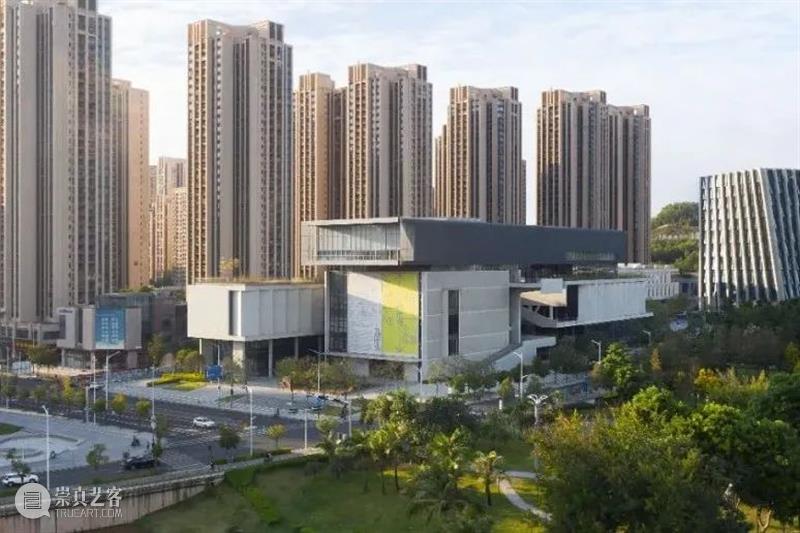
坪山美术馆位于坪山文化聚落北区,是深圳重要的公共文化设施。坪山美术馆以创新的体制机制,推动传统公立美术馆与民间美术馆的资源融通,汇聚各方能量,办一个专业化、品质化、国际化的“正而酷”的美术馆,成为集活力、包容、创意、互动为一体的新时代新都市美术馆新标杆,为市民群众带来新鲜、多元的文化享受和体验。

Curator: Jiang Jun
Producer: Liu Xiaodu
Opening: 2022.9.13
Location: Pingshan Art Museum, 6th Floor
Address: Huide Road, Pingshan Street, Pingshan District, Shenzhen
Host: Culture, Radio and Television, Tourism and Sports Bureau of Pingshan District
Organizer: Pingshan Art Museum
Project Team: Pingshan Art Museum
Visual Design:BAI & PARTNERS
Production: Brick Exhibition
Support Organization: A Thousand Plateaus Art Space
Circumference
“Despite the excellent eyesight of Lou Li and the supreme craftmanship of Gong Shuban, one cannot draw a circle and a square without a compass and a ruler.” This is the opening line of a Chinese Classics Mencius: Li Lou Part 1. In this classic text, compass and ruler together represent a systemic structure that guides the modus operandi and informs one’s way of being-in-the-world. It is here where our journey through Wang Chuan’s explorations is set in motion.
Since 1978, Chinese art has gone beyond the unidirectionality of Socialist Realism. Chinese artists blossomed under the pluralist creative currents. Wang Chuan was one of the few pioneering artists at forefront of such transformation. The second wave of the international modernist movement began to set the pace for the artistic movements in the West after World War II. Chinese abstract art also flourished in the post-1978 era as a part of the global movement. Wang Chuan’s exploration of abstract art through forms and boundaries, made him undoubtedly the pioneer in the ’85 New Wave period.
The strong influence of the international modernist movement on Chinese artistic conventions made ways for pluralist praxis. Although the movement has changed the unitary way of artistic practice in China, the general public was not ready for it. In the 1990s, Pop Art’s impact on the development of Chinese contemporary art was wide and mainstream. It was not until the second decade of the 21st century did abstract art become more accepted by the general public. Today, as Wang Chuan’s relentless exploration of abstract art continues, it is also worth re-examining this odyssey.
In comparison to the binary oppositions between appearances/things in themselves and spiritual/material in western worldview, Chinese conception of binary relations is one of complementarity – where the ying and the yang work together in the creation of life. By the same token, the idea of abstractness in Chinese art is unlike the pursuit of metaphysical transcendence in the West. It is, therefore, far from the pursuit of abstract purism. Rather, Chinese abstract art comes from the everyday life and takes form through the interaction with the natural environment. The state of in-betweenness is the essence pursued in the interpretation of Chinese art. In the liminal space between splashes of ink and strokes of cursive script, surrounded by manmade features in Chinese gardens, lies all that is ambiguous and thought-provoking.
Wang Chuan’s journey has not only internalized the international modernist influence from the West, but also externalized his creations in abstract forms that remain in dialogue with the traditions of Chinese aesthetics. From ink painting and calligraphy to oil painting, he continues his endeavors in parallel. He is neither obsessed with geometrical transcendence, nor the extreme depth of the subconscious. Indeed, he is somewhere in between. Wang Chuan meanders between ideal abstractness and everyday life , with multiple images, in a non-committal and ambiguous way.
The title of Wang Chuan’s solo exhibition at Pingshan Art Museum, Shenzhen is Circumference( square and circle), signifying rules and statutes. The exhibition is put together with two intentions. One is to reflect the core components of fang (square) and yuan (circle) in Wang Chuan’s works. The other is to outline the essence of his creation, and that is the state of in-betweenness. This exhibition is, therefore, a tribute to the contributions made and accomplishment achieved by Wang Chuan, as one of the pioneering Chinese contemporary artists.
Jiang Jun
August 15, 2022

Wang Chuan
Wang Chuan was born in Chengdu in 1953, and received Bachelor degree and graduated from the Traditional Chinese Painting of Sichuan Fine Art Institute in 1982. He lives and works in Shenzhen now. Wang is a key figure in the Scar Painting movement. He began his early career as a successful realist painter and turned to abstract painting during the 1985 New Wave period. In the late 1990s, sudden illness brought Wang Chuan to a turning point that helped transform his practice. Painting became a personalized spiritual practice. The energy at work in his more recent work arises from contrasts of scale, density, line and surface. This introspective and self-reflective way of working has enabled Wang Chuan to achieve insights, especially through the contemplation of oriental philosophy, which cannot be obtained from art history alone. The formal resources of his work are both rich and complex. There is the line as inherited from traditional Chinese art but transferred into oil on canvas; there is graffiti; doodling; drawing in paint; and there are elements of both abstraction and figuration. It is as if Wang Chuan is suspicious of the purity of abstraction and he is equally suspicious of the power of figuration. With many solo exhibitions, not only in China but also in the USA and Germany.His work can be found in many collections, including the British Museum, The Los Angeles County Museum of Art, Ateneum Museum, Finland, Minsheng Art Museum,UCCA,Mingsheng Art Museum,HKMoA,Asian art aaa, M+ Contemporary Art Museum,Liu Haisu Art Museum,Long Museum,Shanghai Duolun Museum Of Modern Art,Guangdong Museum of Art,Hexiangning Art Museum,OCT-Contemporary Art Terminal,Shenzhen Art Museum,Guan Shanyue Art Museum and Hubei Museum of Art.
Jiang Jun
Dr. Jiang Jun is an art historian, curator, art critic, post-doc in architecture at Tongji University, and a Phoenix Art columnist. He currently lives and works in Shanghai and Hangzhou. Since 2015, he has been teaching art history and art theory at China Academy of Art, as well as other fine arts academies, such as Shanghai Academy of Fine Arts and Kunstakademie Münster. He is a researcher of the International Public Art Association (IPA) and a member of the Information and Interaction Design Professional Committee (IIDC) of China Industrial Design Association. In 2022 he is invited to be the curator of the 7th Guangzhou Art Triennial.
About PAM
Situated in the north district of Pingshan Culture Quarter, The Pingshan Art Museum (PAM) is an important public cultural institution in Shenzhen. It is a major force for resource fusion from conventional public art museums and private art institutions, fueled by its institutional innovation. Aiming to build an art museum that is “positive and cool”, PAM actively explores professional development with high-quality in an international scope. The Pingshan Art Museum dedicates to be a new landmark in our time by bringing fresh and diverse cultural enjoyment and experiences to its citizens and celebrating vitality, inclusion, creativity, and interaction.

Shenzhen Contemporary Artists Series |
Prelude | Making History and Making Endeavors
The development of contemporary art in Shenzhen can be traced back to as early as 85 New Wave period. At that time, as a burgeoning and imaginative city, Shenzhen gave birth to some sporadic art movements and individual practices. However, Shenzhen then was obligated to undertake the mission of conducting experiments and thereby working miracles in the economic and political fields. As a result, culture and art were emerging, with dramatic growth yet to come.
Until 1997, Shenzhen witnessed the building and opening of He Xiangning Art Museum and Guan Shanyue Art Museum in the same year. Contemporary art in Shenzhen has shown an increasingly clear academic positioning, while demonstrating the rise and vitality of Pearl River Delta in the contemporary art context. In 2005, OCAT, initiated by Huang Zhuan among others, was formally established in Shenzhen, marking the awakening of the subjective consciousness of contemporary art in Shenzhen. It can be concluded that Shenzhen position and its independent efforts concerning Chinese contemporary art have helped facilitate the academic research and value construction of Chinese contemporary art. At this stage, the contemporary art in Shenzhen has also witnessed the sprouting of non-indigenous and events-based art when a surprising number of biennales came out. Objectively speaking, the series of practices loosened and cultivated the soil for contemporary art in Shenzhen, while promoting and shaping the basic appearance of the development of contemporary art in Shenzhen today.
Against this backdrop, Pingshan Art Museum was established as the times demanded. Over the past two years of work, we have been emphasizing historical perspectives, contemporary pivots and prudent judgment, which should play a role in the construction of contemporary art scenes and local art. Based on the realistic situation and development stage of contemporary art in Shenzhen, the Shenzhen Contemporary Artists Series is expected to promote the major construction of contemporary art in Shenzhen by means of inspiring, assisting and inheriting acts. We hope to present the structure and texture of Shenzhen contemporary art through the analysis of individual cases. The richer the texture, the greater intellectual thickness and potential the city will have.
The contemporary art in Shenzhen presents a state of individual migration and frequent movement, which prompts the definition of "Shenzhen Contemporary Artists". Among them are the artists Liang Quan and Zhou Li who have been involved into the field for 20 or 30 years, Jiang Zhi who went north after the momentous years of starting out a career as an artist in Shenzhen, as well as Li Liao born in 1980s. Besides, the said artists also include Xue Feng who has left school and moved to Shenzhen, and Shen Shaomin, who treats Shenzhen as a temporary place of lodging like a migratory bird. We categorize them as Shenzhen contemporary artists for inspection, sorting and exhibiting. Certainly, we are aware that the judgment itself will promote the infrastructure construction of the local art ecology on the one hand, which also means that this work will be full of challenges and hardships. However, we firmly believe that the shenzhen contemporary art today needs to be reviewed, sorted out and examined concerning its short yet rich history, thus resulting in observations of and judgments on the scene here and now. Should the contemporary art in Shenzhen advance, it needs some self-examination and adventure.
I recall that the late Huang Zhuan, an important promoter of contemporary art in Shenzhen and an art critic, said: "Not all times can go down in history. Only those times that have truly changed the value of our lives can make history; not everyone can go down in history. Only those who are genuinely able to produce creations can pass into history.” Pingshan Art Museum is looking for those “changes” and “creations”, while weaving them into the narrative of Shenzhen contemporary art. We hope to build some solid and time-honored “infrastructure" for Shenzhen and for the contemporary art ecology in southern China.
Liu Xiaodu, Director of Pingshan Art Museum
Zhong Gang, Planner of Readers of Shenzhen Contemporary Artists Series

正在展出
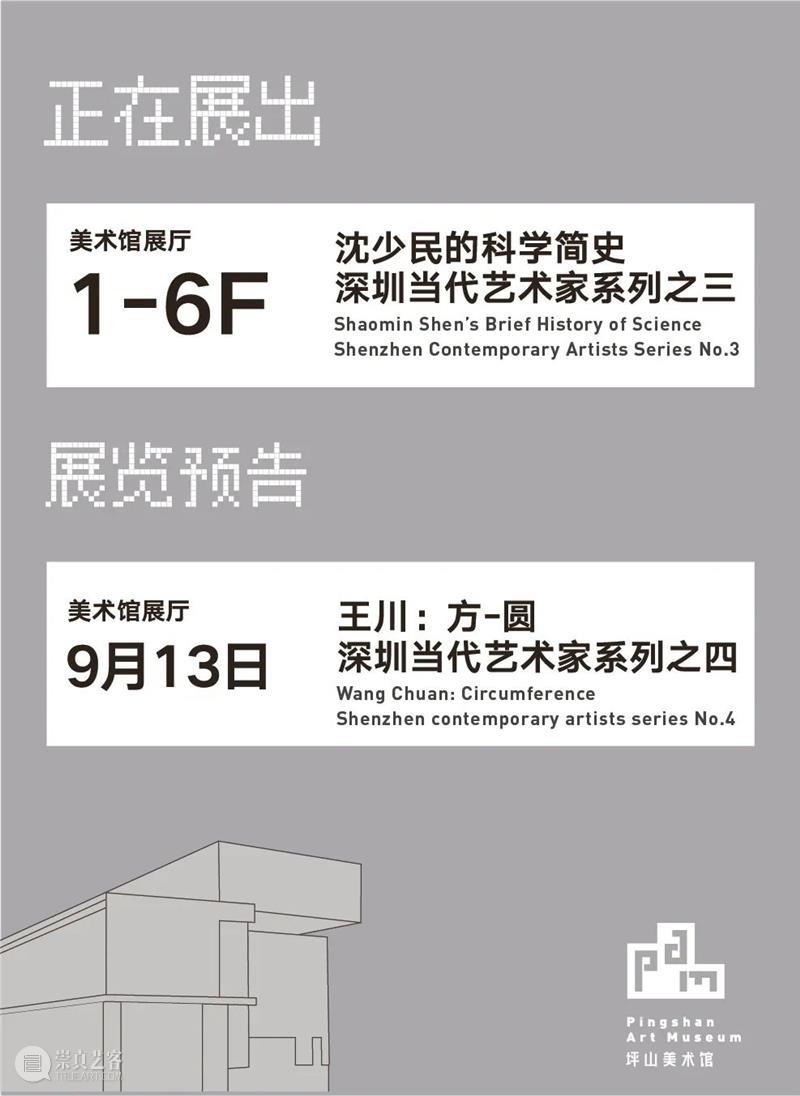
温馨提示
根据坪山区最新疫情防控要求,入馆参观须凭48小时核酸阴性证明或当日(24小时内)核酸采样凭证(记录)。敬请大家合理安排参观时间,错峰参观、分时预约、间隔游览。感谢您的理解与支持!
● 坪山美术馆采取限流开放,实行预约进馆制(可线上或现场扫码预约);
● 线上预约路径:关注坪山美术馆公众号-点击底部菜单栏“预约观展”并填写参观信息;
● 现场扫码进馆:在美术馆入口处扫码登记、出示健康码并经测温正常后入馆参观;
● 预约限额、开放时段等信息以预约系统为准;
● 系统提前三天开放预约。

编辑|李语湉
审校|刘晓都 李耀
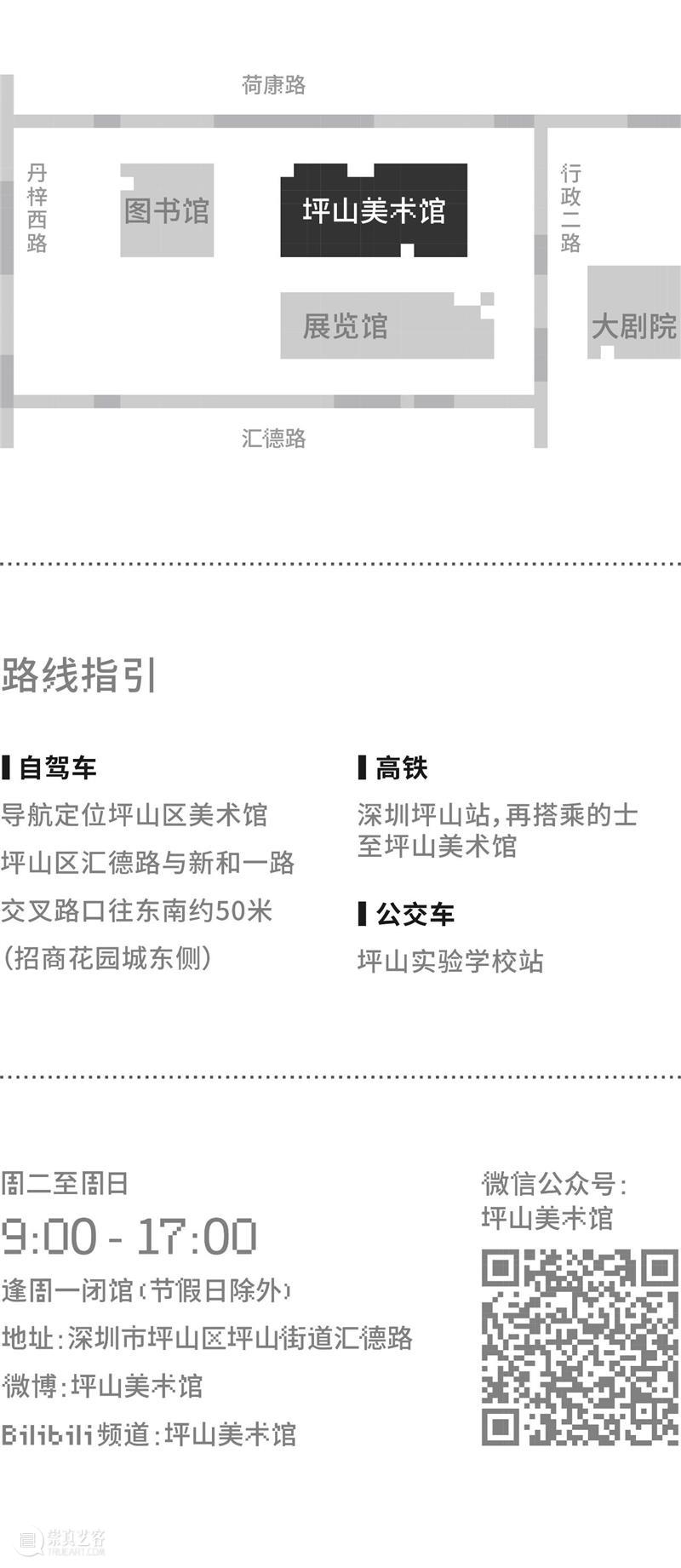


已展示全部
更多功能等你开启...





 分享
分享